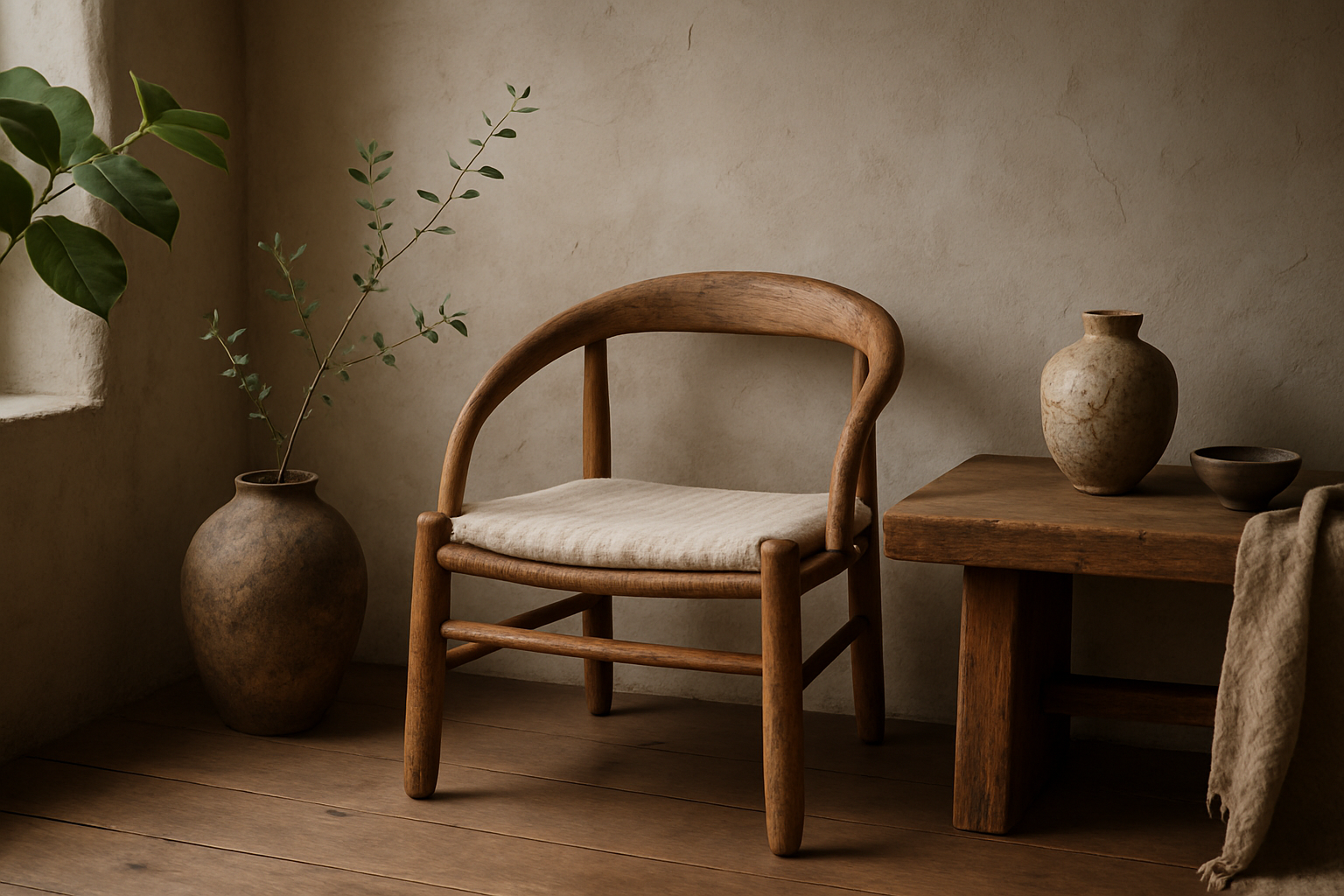The Allure of Wabi-Sabi: Embracing Imperfection in Home Design
The concept of wabi-sabi, an ancient Japanese philosophy celebrating the beauty of imperfection, has quietly revolutionized modern home design. This timeless aesthetic encourages us to find beauty in the flawed, the weathered, and the natural. As we step into a world dominated by sleek minimalism and mass-produced perfection, wabi-sabi offers a refreshing counterpoint, inviting us to create spaces that are not just visually appealing but deeply soulful and authentically human.

The Roots of Wabi-Sabi
Wabi-sabi finds its origins in 16th century Japanese tea ceremonies, where simple, handmade items were prized over ornate, mass-produced ones. The term itself is a combination of two concepts: wabi, which refers to simplicity and a connection with nature, and sabi, which embraces the beauty that comes with age and wear.
This philosophy stands in stark contrast to Western ideals of perfection and symmetry. Instead, it celebrates the cracks, chips, and weathering that occur naturally over time. In the context of home design, wabi-sabi encourages us to appreciate the unique character of handmade items, the patina of aged wood, and the organic forms found in nature.
Key Principles of Wabi-Sabi Design
Implementing wabi-sabi in home design involves several key principles. First and foremost is the embrace of natural materials. Wood, stone, clay, and natural textiles are favored for their inherent imperfections and ability to age gracefully. These materials not only add visual interest but also create a tactile experience that connects us to the natural world.
Simplicity is another cornerstone of wabi-sabi design. Clutter is eschewed in favor of carefully curated spaces where each item has purpose and meaning. This doesn’t mean stark minimalism, but rather a thoughtful approach to what we choose to surround ourselves with.
Color palettes in wabi-sabi interiors tend to be muted and earthy, reflecting the hues found in nature. Soft greens, warm browns, and subtle grays create a calming atmosphere that allows the textures and forms of objects to take center stage.
Incorporating Wabi-Sabi in Modern Homes
Bringing wabi-sabi into contemporary interiors doesn’t require a complete overhaul of your space. Start by introducing handcrafted elements - a ceramic vase with visible brush strokes, a hand-woven throw with slight irregularities, or a piece of driftwood as a natural sculpture. These items add character and soul to even the most modern of spaces.
Consider the power of negative space in your design. Wabi-sabi encourages us to appreciate emptiness as much as fullness. This might mean leaving a wall bare except for a single, meaningful piece of art, or creating open areas in a room that allow the eye to rest.
Embrace the aging process of your home and belongings. Instead of immediately replacing a scratched table or a chipped vase, consider how these marks add to the item’s story and character. This shift in perspective can transform our relationship with our possessions and our living spaces.
The Psychological Benefits of Wabi-Sabi Interiors
Beyond its aesthetic appeal, wabi-sabi design offers significant psychological benefits. In a world that often demands perfection, living in a space that celebrates imperfection can be profoundly liberating. It encourages us to accept the natural cycles of growth, decay, and renewal, both in our environments and in ourselves.
Wabi-sabi interiors also promote mindfulness. By surrounding ourselves with objects that have history and character, we’re more likely to slow down and appreciate the present moment. This can lead to reduced stress and increased overall well-being.
Moreover, the emphasis on natural materials and textures in wabi-sabi design can enhance our connection to nature, even in urban environments. This biophilic aspect has been shown to improve cognitive function, creativity, and mood.
Balancing Wabi-Sabi with Modern Functionality
While wabi-sabi celebrates the old and imperfect, it doesn’t mean sacrificing modern comforts or functionality. The key is to find a balance between the rustic and the contemporary. For example, a sleek, modern kitchen can be softened with handmade ceramics and a weathered wooden cutting board. A high-tech entertainment system can be housed in a vintage cabinet, creating an intriguing juxtaposition of old and new.
This balance extends to maintenance as well. While wabi-sabi encourages us to appreciate wear and tear, it doesn’t mean neglecting our spaces. Regular care and cleaning are still important, but with a gentler approach that allows patina to develop naturally over time.
The Future of Wabi-Sabi in Home Design
As we move further into the 21st century, the principles of wabi-sabi are likely to become even more relevant. In an era of mass production and digital perfection, there’s a growing desire for authenticity and connection to our physical environments. Wabi-sabi offers a way to create spaces that feel truly personal and lived-in, rather than sterile showrooms.
Furthermore, as sustainability becomes an increasingly important consideration in design, wabi-sabi’s emphasis on natural materials and appreciation for aged items aligns perfectly with eco-conscious values. By embracing imperfection and cherishing objects for their history and character, we can create homes that are not only beautiful but also kinder to the planet.
In conclusion, wabi-sabi presents a compelling alternative to the pursuit of perfection in home design. By embracing the beauty of imperfection, we can create spaces that are not only visually striking but also deeply comforting and personally meaningful. As we navigate an increasingly complex world, the simple, grounding principles of wabi-sabi offer a path to creating homes that truly nurture our spirits and reflect our humanity.





